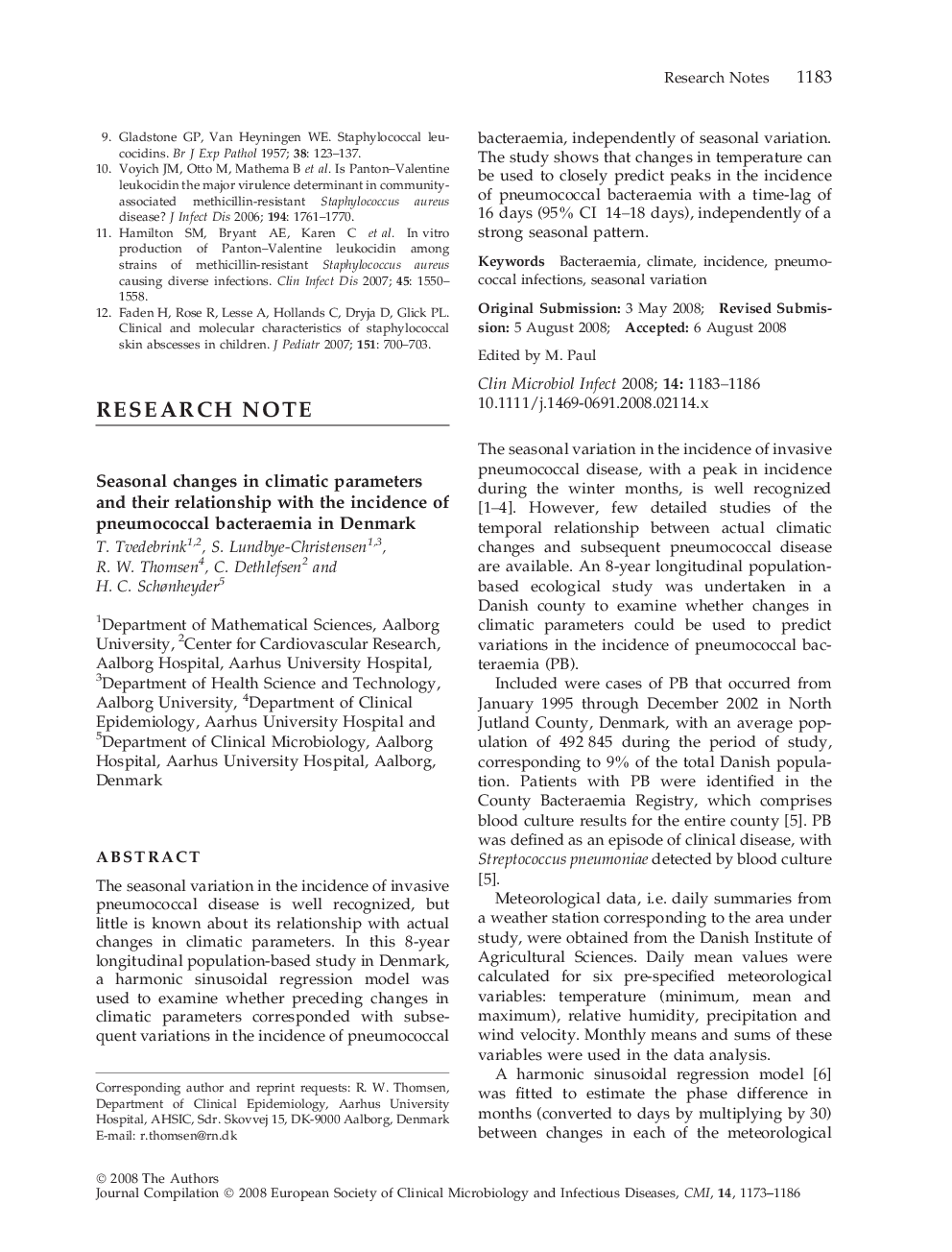| Article ID | Journal | Published Year | Pages | File Type |
|---|---|---|---|---|
| 3398369 | Clinical Microbiology and Infection | 2008 | 4 Pages |
Abstract
The seasonal variation in the incidence of invasive pneumococcal disease is well recognized, but little is known about its relationship with actual changes in climatic parameters. In this 8-year longitudinal population-based study in Denmark, a harmonic sinusoidal regression model was used to examine whether preceding changes in climatic parameters corresponded with subsequent variations in the incidence of pneumococcal bacteraemia, independently of seasonal variation. The study shows that changes in temperature can be used to closely predict peaks in the incidence of pneumococcal bacteraemia with a time-lag of 16 days (95% CI 14–18 days), independently of a strong seasonal pattern.
Related Topics
Life Sciences
Immunology and Microbiology
Microbiology
Authors
T. Tvedebrink, S. Lundbye-Christensen, R.W. Thomsen, C. Dethlefsen, H.C. Schønheyder,
